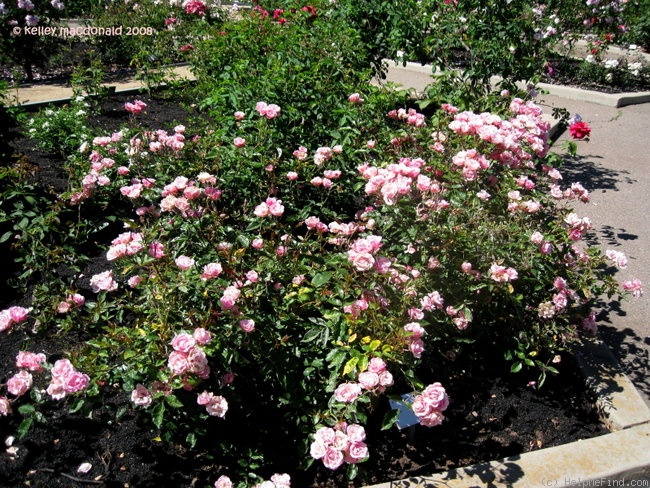'La Marne' rose Description

Photo courtesy of Kelley Macdonald
HMF Ratings:
49 favorite votes.
Average rating:
EXCELLENT-.
ARS:
Pink blend Polyantha.
Registration name: La Marne
Exhibition name: La Marne
Class:
Polyantha. (Series: Earth Kind ™)
Bloom:
Light pink, salmon-pink edges, ages to lighter . Mild fragrance. Semi-double (9-16 petals), in large clusters bloom form. Continuous (perpetual) bloom throughout the season.
Habit:
Glossy foliage.
Height: 4' to 6' (120 to 185cm).
Growing:
USDA zone 5b through 9b. Spring Pruning: Remove old canes and dead or diseased wood and cut back canes that cross. In warmer climates, cut back the remaining canes by about one-third. In colder areas, you'll probably find you'll have to prune a little more than that.
Patents:
Patent status unknown (to HelpMeFind).
|